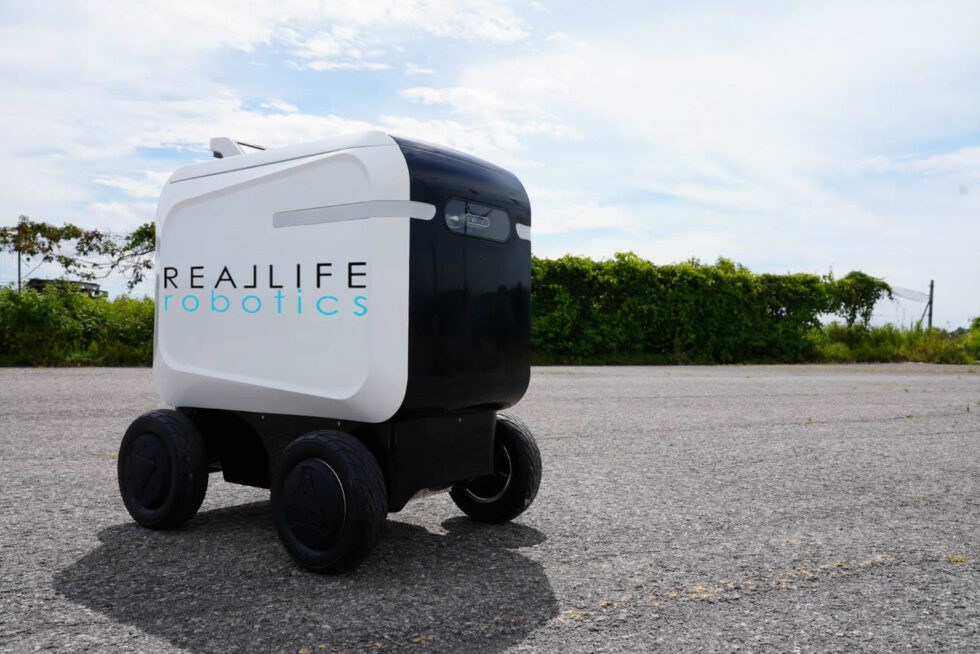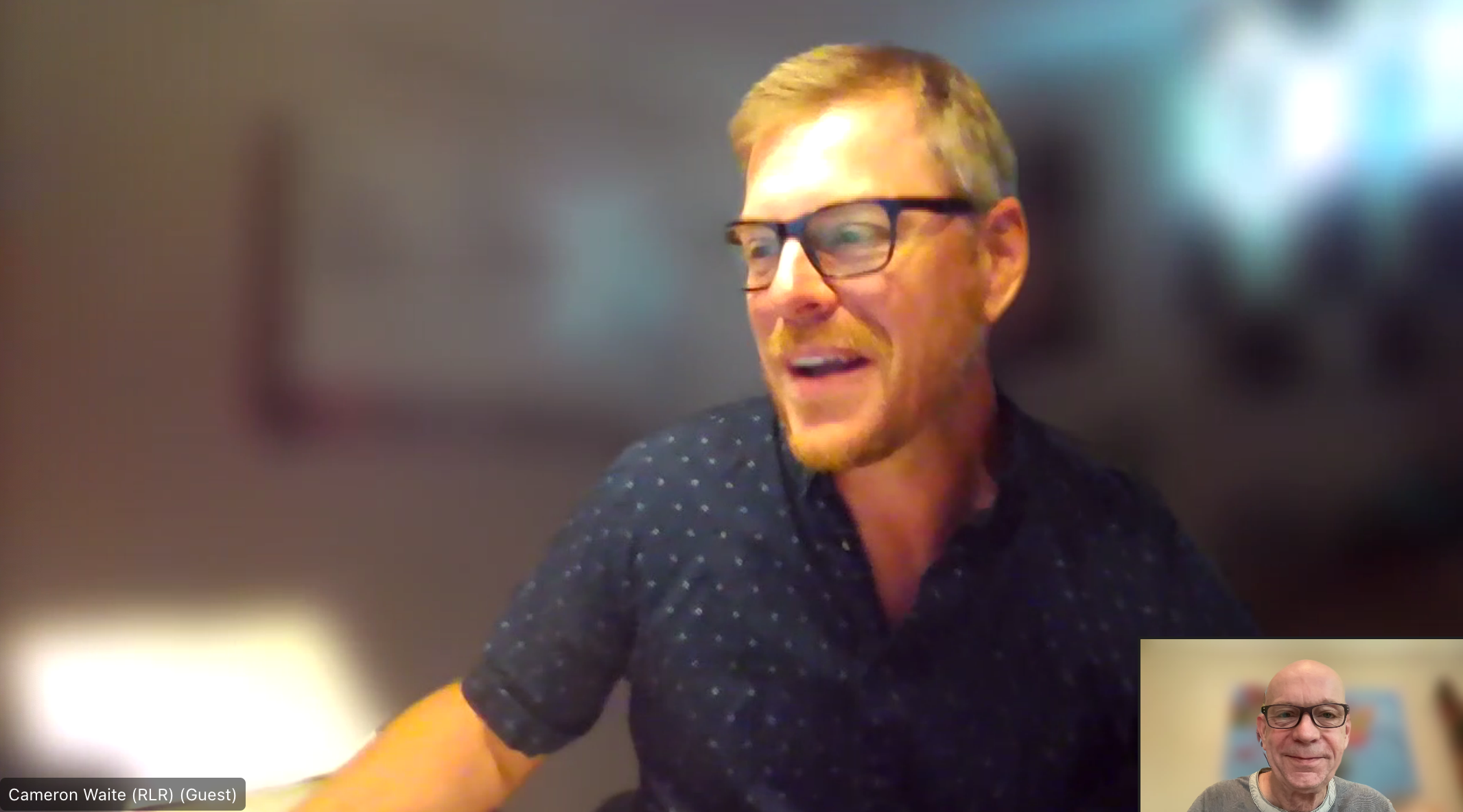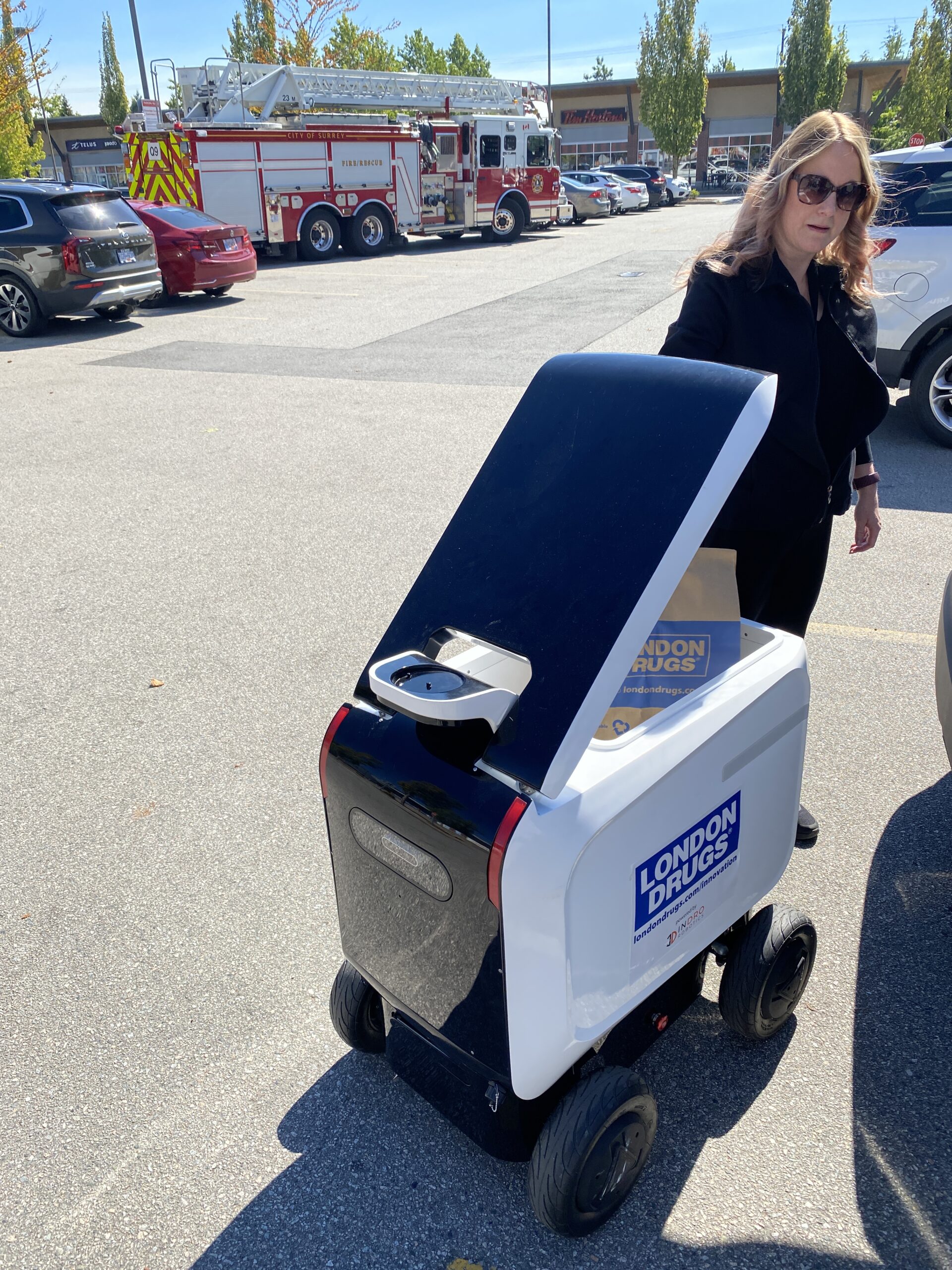By Scott Simmie
There’s a new robot – and a new robotics company – in town.
Real Life Robotics, founded by CEO Cameron Waite, is a cargo and last-mile robotics delivery firm. Its deployments utilise products developed by InDro Robotics intended for both autonomous and tele-operated missions over 4G and 5G networks. These robots, customisable for client-specific applications, are designed for long-range and large payloads.
Its first workhorse, currently doing demos for potential clients, is a unit Real Life calls BUBS. Developed by InDro, the robot is a second-generation delivery machine with impressive payload capability and a lockable payload door that opens upon reaching its destination. It’s suitable for a wide variety of use-cases and can be modified for client-specific needs.
BUBS is packed with features, including:
- A total of six cameras, including two sets of depth perception cameras at the front and rear for greater situational awareness for the operator
- LED running lights, signal lights, brake lights
- Large cargo bay (50kg capacity) that can be opened and closed remotely
- Greater all-weather protection and a touchscreen interface for customers
Just as the Artist Formerly Known as Prince had a name change, so too has BUBS. InDro’s and Real Life Robotics’ earlier development name for the machine was ROLL-E 2.0. It went through successful trials with London Drugs in Surrey, BC, for home deliveries.
Below: Bubs in action during trials in BC for London Drugs
THE INDRO-REAL LIFE CONNECTION
Like most business relationships, this one began with a conversation. Specifically, a chat between InDro CEO Philip Reece and Cameron Waite in 2021. Just as InDro has deep expertise in robotics R&D, Waite has a high-level background in robotics sales and customer success. With more than two decades of experience in hardware sales, Waite was an early hire at Canadian success story Aeryon Labs, a pioneering UAV firm that was acquired by FLIR for $200M.
Waite was responsible for global sales with Aeryon, engaging with clients ranging from police and First Responders to defence, commercial inspection, “and everything in-between,” he says. He learned a lot about different use-case scenarios for the product – as well as the ability of engineers to customise capabilities of the core product line to meet the needs of clients.
From there, he went on to a similar position at Avidbots. He was, again, a very early-stage hire with significant responsibilities for helping grow the company.
“There was no revenue there prior to my joining,” he says. “I was the first sales hire at Aeryon; I was the first sales hire at Avidbots.”
So, what did he do at Avidbots?
“I was able to engage with some of the largest companies in the world – everyone from DHL to Walmart. I spent five years there, growing that organization, hiring and managing staff, sales people, but also being involved in customer success and support and product and product development. Making sure that the feedback from the clients in the field was making its way to the team to build and develop and modify and tweak that robot to better fit the needs of our clients so that our clients would continue to want to scale.”
We interviewed Waite (obviously) about his plans for Real Life Robotics, and the kind of clients that might be a solid fit for BUBS.
Below: Real Life Robotics CEO/Founder Cameron Waite in conversation with Scott Simmie
QUESTIONS. AND ANSWERS
So let’s get into the Q & As.
Q: Tell us about BUBS
A: BUBS is a second-generation delivery robot. It is a large unit relative to what we typically would see out in the market. It uses a suite of sensors onboard to give it spacial and environmental awareness. We use systems like the NVIDIA Nano to process data that the robot sees in real time, which allows it to make its own autonomous decisions to navigate through the world.
The robot is large-capacity and has a locking, remotely operated lid that allows it to securely hold and transport whatever it is our customers are interested in moving. It’s a large-enough system that it can hold food, beverages, product from a store, pharmaceuticals or lab samples from a hospital, dirty linens in a long-term care facility, product on a golf course – really anything that needs to be transported from Point A to Point B.
It has indoor and outdoor capabilities, so it is weather-resistant. It can handle some pretty significant slopes and terrain. The robot, in addition to its autonomy and sensor package, utilises a radio system that allows us to have remote assistance or piloting as necessary through a WiFI connection, a 4G/5G connection, or private network. We currently use the Rogers 5G network as our backbone, and from a teleoperation or semi-autonomous perspective, we can have an operator located anywhere on planet earth and have that person remotely assist or operate the robot as necessary with under a 1/10th of a second latency. So it’s near real-time using EDGE computing.
IS BUBS DESIGNED FOR AUTONOMOUS OPS OR TELE-OPERATION?
That was the question. Here’s the answer.
A: The answer depends on the application itself. So some environments where we have a high degree of predictability and can pre-map and understand that environment, those are environments that are more conducive to fully autonomous operations. The robot can be trained using Computer Vision and AI to autonomously navigate through an entire space if that space is predictable.
Alternatively, if there is a high degree of variability, or there are safety or regulatory concerns that require a human in the loop, we have that option as well. So, for example, if a robot was to be traveling in a city environment and it needed to cross a road – that’s a complex procedure for any robot to do. And there’s likely a degree of human interface that would be beneficial to have that robot determine when and where it’s safe to cross the road. Or if a path was blocked by a large-enough obstacle, and the robot needed to exit a geofence that is pre-programmed into that operation, in order to safely manoeuevre around that obstacle, it’s likely a good idea to have a human in the loop to make that complex decision.
The more repetitive times that type of an application happens, the more a robot can be trained to autonomously execute those types of scenarios. As that robot’s deployment increases over time, the human interface required decreases. But there will always be some level of human in the loop.
WHAT ABOUT REGULATORY ENVIRONMENTS AND ADOPTION?
A: Over the next 10 years, we will see an enormous increase in the reliance on robotics to do basic things like delivery inside municipal environments. One of the things I learned at Aeryon years ago was the importance of engaging with government early on, because government can otherwise potentially shut down your operations at a really inopportune time. And so Real Life Robotics has already engaged with a number of Canadian cities and had early approvals to allow our robots to drive around in certain automation projects in city environments.
Municipalities typically have concerns around full automation and Level 4, Level 5 autonomy. If Elon Musk and his team are not able to get approvals to drive around in downtown Toronto, how do we think we’re going to get the same approvals to drive around autonomously? We’re not. So the cities have actually really embraced the fact that our robots can have a human in the loop to make some of those difficult decisions. That helps alleviate some of the concerns around full autonomy. But we have spent the time building the groundwork to allow us to operate in their environments and we, in return, intend to work very closely with those cities to actually build the playbook, and build the ruleset and the framework around successful and safe deployment of robots in urban environments.
CAN BUBS BE MODIFIED FOR CLIENTS?
A: Absolutely. Our mandate is to commercialise robots. And as part of any startup growth plan, sometimes there are pivots along the way that you need to make. But in general, a client that has a real ROI potential where robots can facilitate that, and a client that has the potential for scale, that’s our expertise. With the combined benefit of having InDro, we can not only develop a very specific robot solution to solve a customer’s immediate concerns or challenges, we can also scale that robot.
Q: Why did you feel InDro was the best fit for a partner?
A: In general, InDro would be considered a world-class R&D company – hands down, bar none. And that’s why we partnered with them. The firm has an enormous skillset, including expertise with autonomy, sensor fusion and integration. Because the company has all off that, plus a large engineering staff, we’re lucky to call InDro a true partner. InDro’s capabilities and agility will help speed the path of Real Life – and our clients – to commercialisation.
Below: BUBS in action during a pilot project in Surrey, BC
SPREADING THE NEWS
Real Life Robotics issued a news release on its partnership with InDro, which you can find here. But we’ll take the liberty to borrow a section from it:
“The ground robotic delivery market is still very new,” explains Waite. “We engage with both commercial/industrial and government clients who want to lead the charge in adoption of this exciting technology we’ve created.”
“Using a combination of hardware, software, and artificial intelligence, Real Life Robotics’ flagship product, called BUBS™, provides cargo and delivery automation at scale. The company’s unique Robot-As-A-Service model approach provides clients with a white-labelled, customized robot at an accessible cost, allowing businesses to realize immediate top line and bottom line impact.
“Businesses in manufacturing, retail, healthcare, agriculture and food services sectors among others can utilize BUBS™ for a variety of last-mile delivery applications with BUBS™ providing immediate solutions to labor shortages, as well as cost savings, labor efficiencies optimization while driving additional new revenue streams.
“InDro and Real Life Robotics will work closely together to enhance robot offerings, as well as identify new ways of collaborating in a fast-growing marketplace.”
INDRO’S TAKE
We’re obviously equally pleased with this partnership – and are eager to build and customise ground robot solutions for the clients of Real Life Robotics.
“Cameron Waite has deep expertise in sales and support of aerial and ground robotics, along with customer success,” says InDro CEO Philip Reece. “We look forward to creating custom solutions at scale for Cam’s clients. Real Life Robotics is the right company, with the right leader, at the right time.”
You can learn more about Real Life Robotics here. And you can reach CEO Cameron Waite here.
copyright 2022 © InDro Robotics all rights reserved



